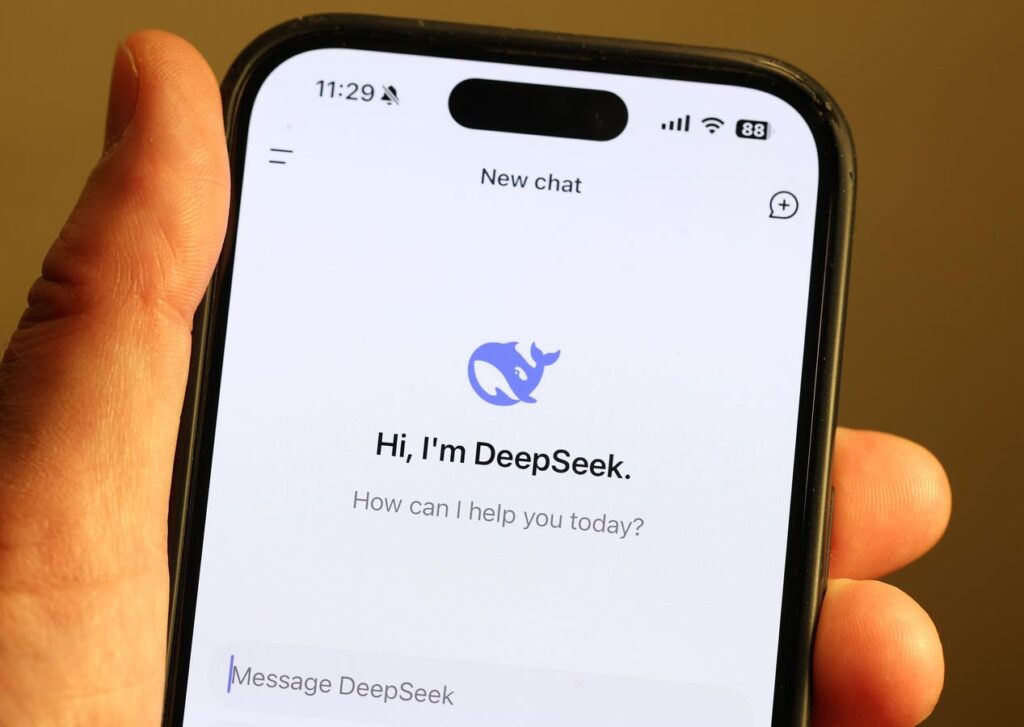The artificial intelligence landscape was shaken recently by the release of DeepSeek’s R1 model, an open-source reasoning AI that has quickly gained traction among developers and researchers. The debut of R1 resulted in a major market reaction, including a significant sell-off in tech stocks, particularly among AI hardware and infrastructure providers like Nvidia. The timing is notable, not only because of R1’s rapid rise but also because of the announcement of the Stargate Project — a massive investment in AI data centers — that occurred around the same time. Together, these events underscore the deep uncertainty surrounding AI investment and the business models that will dominate.
DeepSeek’s R1 and Open-Source Disruption
DeepSeek’s R1 model is being heralded as a formidable rival to proprietary systems like OpenAI’s GPT-4 and Google’s Gemini. Unlike those models, R1 is open-weights, meaning anyone can use, modify, and build upon it. This has added fire to debates about whether open-source or closed AI systems will ultimately prove dominant. While open models democratize AI capabilities, they also pose challenges for companies seeking to monetize their investments. If firms can simply take an existing model, refine it, and release their own versions, then the return on investment for proprietary AI development becomes murkier.
This very issue is at the heart of OpenAI’s recent claims that DeepSeek used techniques like distillation to train its model on OpenAI outputs—potentially violating OpenAI’s terms of service agreements. The dispute highlights a major tension in AI development: without clearer property rights over AI-generated outputs, companies may struggle to justify their massive R&D expenditures.
The Market’s Reaction And Nvidia’s Position
The release of R1 led to a steep decline in Nvidia’s stock price, wiping out hundreds of billions in market value. Nvidia has been the dominant supplier of AI hardware, with its H100 and H800 GPUs powering the training and inference of the most advanced models. DeepSeek’s claimed ability to develop a high-performing AI at a fraction of the cost of its American rivals raises questions about whether AI operations will remain reliant on expensive, high-powered chips or if software optimization can reduce costs dramatically.
Meanwhile, major investments in AI infrastructure, such as the Stargate project, suggest that some investors still see long-term potential in AI despite the volatility. However, the stark contrast between DeepSeek’s potentially lean training costs and the billion-dollar expenditures on data centers raises immediate concerns about whether these will investments pay off, or if new approaches render them obsolete.
Doubts About DeepSeek’s Claims
Despite DeepSeek’s claims of training its R1 model on a relatively small budget, there are significant doubts about the accuracy of these assertions. Independent analysis suggests that DeepSeek may have spent far more than it publicly disclosed, with estimates indicating that the company operates an extensive AI infrastructure with tens of thousands of high-powered GPUs. If true, this would mean that DeepSeek’s narrative of more cost-effective AI development is misleading. Furthermore, DeepSeek’s reliance on existing AI models may undermine the long-term viability of its approach if the company runs afoul of intellectual property laws.
The Future of AI Investment: What Will Win Out?
AI’s rapid development leaves investors grappling with uncertainty on multiple fronts:
Hardware vs. Software: If companies like DeepSeek can train models more efficiently, will demand for cutting-edge chips decline? Or will foundational models always require state-of-the-art processing power?
Open vs. Closed: If open-source models can rival proprietary systems, will closed AI systems continue to attract capital? Will regulatory measures favor one approach over the other?
Monetization Strategies: Can AI firms generate sustainable revenue, or will low-cost competitors erode their pricing power?
With so much uncertainty, one thing is clear: policymakers must avoid imposing burdensome regulations that exacerbate this uncertainty by inflating the cost of building data centers and restricting access to energy sources. Ensuring a streamlined, predictable permitting process and reducing unnecessary regulatory hurdles will help investors navigate the evolving AI landscape. Governments around the world are racing to regulate AI, but in such a fluid landscape, excessive regulations risk misallocating resources.
DeepSeek’s success also raises questions about the effectiveness of government export controls on advanced AI chips. Instead of imposing further ineffective AI regulations, Congress should focus on clarifying property rights around AI models. If firms cannot recoup their investments due to rampant copying, innovation could slow. At the same time, overly restrictive IP laws could discourage investment and progress as well.
Let Investors Take Risks
Rather than constraining investment with heavy-handed regulations, policymakers should focus on streamlining permits for AI data centers and ensuring that energy infrastructure can support expanding AI operations. Continued investment will allow market forces to determine which models and business strategies succeed. This means:
- Supporting investors willing to take risks in AI infrastructure and model development.
- Ensuring that intellectual property rules are clear and enforceable without stifling innovation.
- Reducing permitting delays and regulatory uncertainty to allow AI development to proceed efficiently.
DeepSeek’s R1 model represents a major inflection point in AI. It has exposed market vulnerabilities, fueled debates about IP rights, and added uncertainty to an already complex investment landscape. Rather than rushing to regulate, governments should focus on enabling competition and letting the best ideas rise to the top. If history has shown us anything, it’s that the best innovations often emerge when risk-takers are given the freedom to experiment.
Read the full article here


